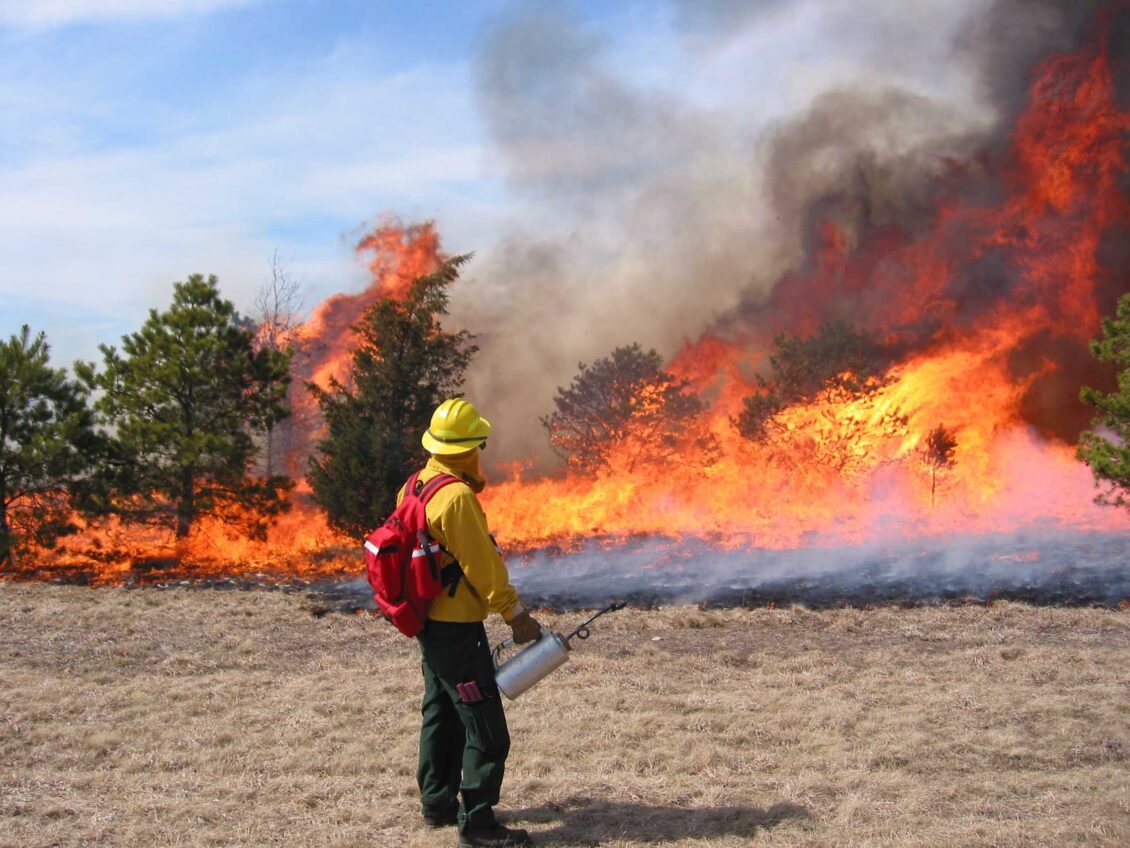U.S. Forest Service conducts prescribed burns for Thursday, March 21, 2024


ASHEVILLE, NC (March 21, 2024) ⇒ The National Forest in North Carolina is planning controlled burn operations today in the Pisgah National Forest, the Nantahala National Forest and the Croatan National Forest. Burn operations may continue as long as weather and fuel conditions remain favorable for safe, effective burns. The goals for the burns are promoting fire-adapted Southern Appalachian hardwood and key pine species habitat as well as reducing hazardous fuel accumulation to reduce the probability of unplanned wildland fire ignitions. Details about the burn unit is included below:
Pisgah National Forest
Appalachian Ranger District – 310-acres in Madison County, approximately 3 miles NE of Hot Springs. Smoke will be visible from US-25/70, NC-209, the town of Hot Springs, and the Appalachian National Scenic Trail. The Appalachian Trail AT does not traverse the burn unit and no closures are anticipated for this burn. However, smoke may impact the AT, particularly from Tanyard Gap to Hurricane Gap.
FS Road 467 (Hurricane Gap Rd.) and FS Road 467A will remain open for the burning period so that visitors may access Rich Mountain Fire Lookout, but we ask that visitors exercise caution and adhere to any posted caution signs in the prescribed fire areas/roads for the safety of fire personnel.
Grandfather Ranger District – 1200-acre prescribed burn on the Grandfather Ranger District on the Caldwell/Avery County line, North of Mortimer. This burn is in the Wilson Creek unit located 8 miles Northwest of Collettsville, NC and 7 miles Southwest of Blowing Rock.
Nantahala National Forest
Nantahala Ranger District – 1448-acres in Clay and Macon Counties. near sections of the Kimsey Creek, Park Gap and Park Ridge trails. No trail closures are anticipated for today.
Croatan National Forest
Croatan Ranger District – two burn units consisting of 758-acres in Craven County, located off Catfish Lake Road and Little Road, 4 miles west of the district office and 183-acres in Carteret County off Lake Road near the community of Newport, 12 miles south of the district office.
Please note, although there are some areas of high fire weather alerts throughout NC, the burn areas remain within moderate conditions which in turn provide excellent prescribed burn opportunities.
Helicopters will be utilized to assist during the burns. No drone/UAV use is permitted during burn operations. Please remember, if you fly, we can’t.
The date and time of any controlled burn and the actual number of acres may change based on fuel and weather conditions.
We ask that anyone near the burn units pay attention to posted signs and watch carefully for wildland firefighters and personnel working in the area. We will monitor wind speed and direction to try and limit smoke impacts on nearby communities, but please be aware of any smoke in the area.
Why controlled burns/prescribed fire?
Fire is a natural part of our forests in North Carolina. Prescribed fires, also known as controlled burns, are an important tool for maintaining that natural process and reducing fuels that build up on the forest floor, while ensuring public and firefighter safety.
How does the USFS plan for a burn?
All controlled burns are thoroughly planned and analyzed by a team of specialists to ensure that wildlife, fisheries, rare plants, and historic sites are not harmed. They use information from decades of fire science research to write controlled burn plans, which are also known as a “prescription”, to improve forest health.
Who participates in a burn? What do they look for?
Wildland firefighters and fire management teams that respond to wildfires are the same people that plan and carefully set controlled burns. They go through extensive training to ensure firefighter and public safety, reduce the impacts of smoke on nearby communities, and set the burns so that they improve forest conditions. Fire managers consider wind speed/direction, relative humidity, conditions on the forest floor, and other factors before and during a burn. They plan for these fires to move slowly and at a low intensity so that they reduce wildfire fuels and allow wildlife to either escape the area or find a refuge and avoid injury. (Often, animals like turkey and deer move in quickly after a burn to take advantage of the newly opened areas and easy to find food sources.) After a burn, fire managers will monitor the area and analyze the effects of the burn.
For more information on how the U.S. Forest Service uses prescribed fire, visit here.
For more information, visit www.fs.usda.gov/nfsnc or follow the National Forests in North Carolina on Facebook (www.facebook.com/nfsnc).
Recent Posts
Caldwell Journal forced to close down
GRANITE FALLS, NC (December 19, 2024) ⇒ Due to the state of my health, I…
Extension Cord Safety Tips
GRANITE FALLS, NC (December 23, 2024) ⇒ Not enough cord for your lamp or radio…
A Christmas Of Long Ago
GRANITE FALLS, NC (December 22, 2024) ⇒ We are very blessed and honored to have…
Caldwell Journal forced to close down
GRANITE FALLS, NC (December 19, 2024) ⇒ Due to the state of my health, I…


